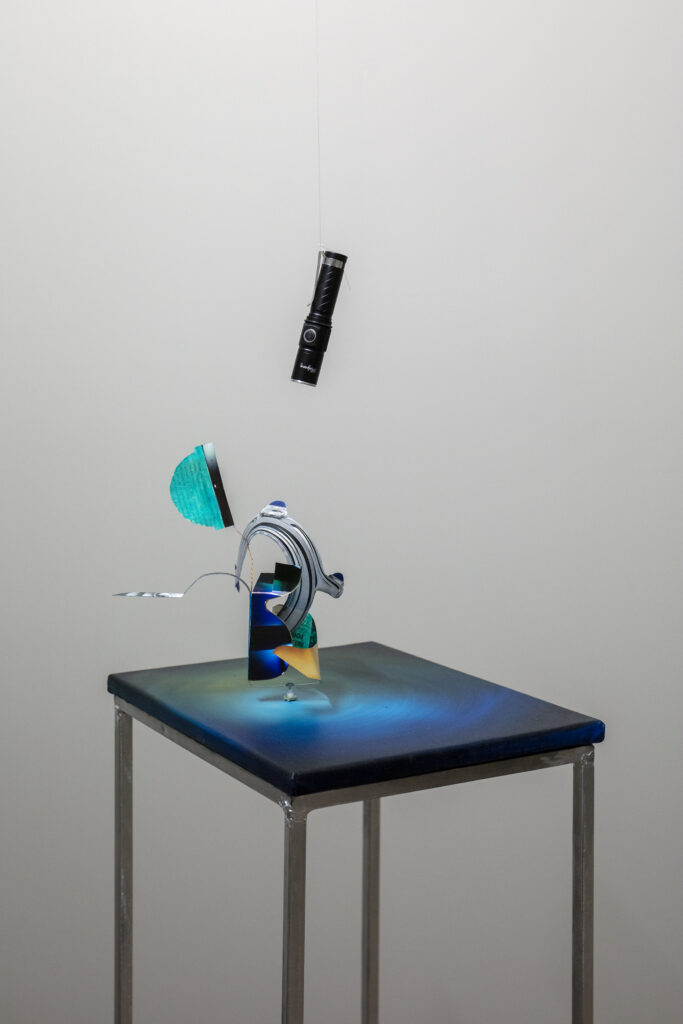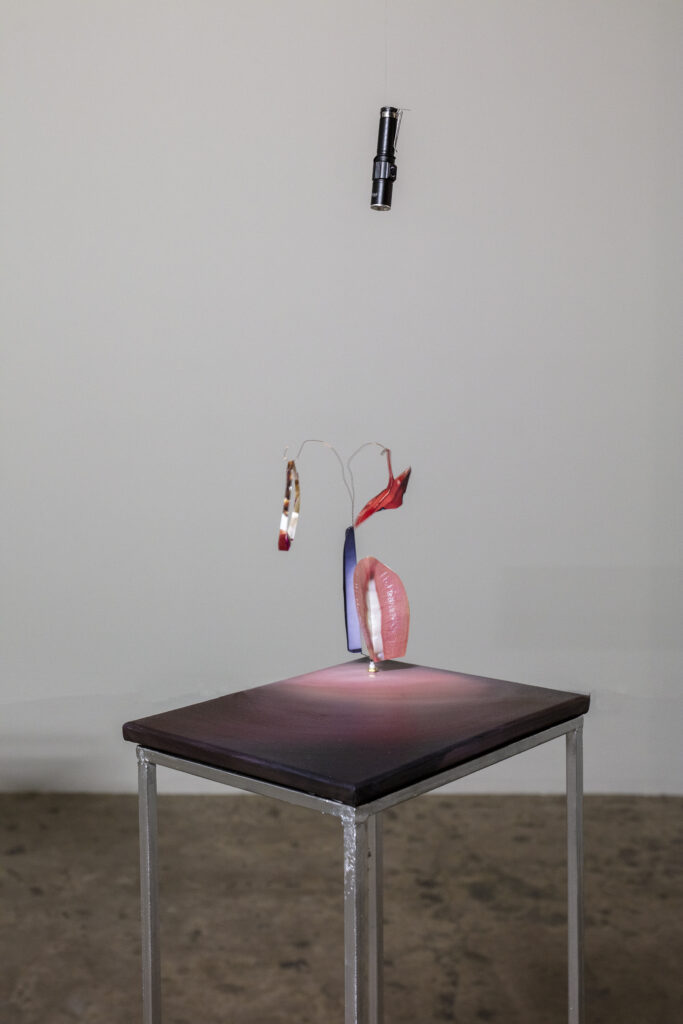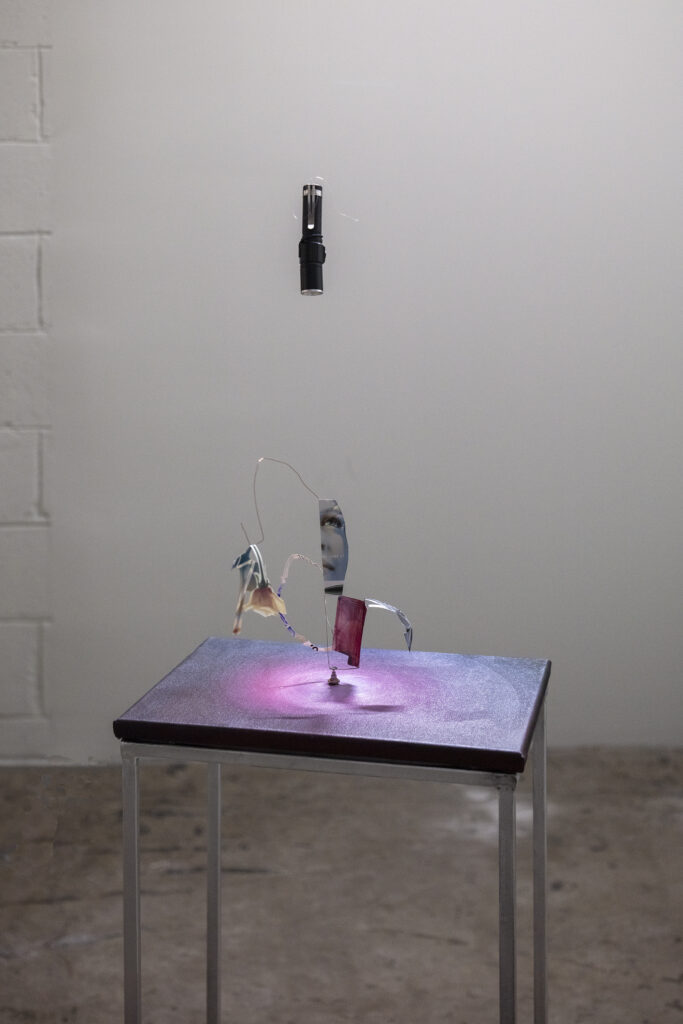New space!
Inaugural exhibition: Nocturnal.
Carolina Fusilier, Maggie Petroni, Emma Pidré & Milagros Rojas.

On the occasion of Zona MACO 2022, Relaciones Públicas opens a new project space in Tacubaya, Mexico City with “Noctámbula,” a dark encounter of four artists: Carolina Fusilier, Maggie Petroni, Emma Pidré & Milagros Rojas.
A concrete industrial passage suspends a series of penumbral objects. In a striking inaugural gesture, this space and exhibition present an antithesis to the blindingly white modality of the typical gallery. “Noctámbula” unfolds as an inquiry into discord around the body, society, and shared conceptual otherness. The works extrapolate universes and phantasmagoric bodies, dialoging material disquiet and convening in a simple gesture of nocturnal togetherness.
The artists are all from Argentina, but it would be too easy to attribute their affinities and peculiarities to shared nationhood or local subcultures. Their work engages in a conversation on malaise as dérivé, much like a sleepwalker wandering into the most existential corners of the mind, contemplating bodies, skeletal and sewer systems; post-human, post-internet collage and gravity defiance; fusions and the invitation to fuse, mount, strap in, or slurp up.
Petroni’s work Nikol, a candelabra of headlights and various goops on a superhuman scale, confronts the viewer as a kinetically static transmutation. Invoking the street at night, it could be interpreted as a car crash, as though, much like in Cronenberg’s The Fly, metallic parts have solidified into mutilated sarx—a fatal fusion between living flesh and dead matter. These sensations are also present in Petroni’s paintings, in which imagery of skeletal faces and actual clothing drip from out the seams.
Pidré’s pointy pelvises and vertebrae present a different sort of existential horror, a darkness confronted by mechanical perfection. The installation Come, Sweet Death layers steel plates carved with laser precision into spindled points. Screws bind the plates together, much like those which hold a replacement hip in its soft cavity. But the installation ultimately resembles a chain link, a spine devoid of surrounding flesh—both weapon and sustaining internal armature.
Milagros Rojas’s Fantasmagorías works form a quiet counterpoint to the main space’s uncontainable gestures. Sketched in tailors’ chalk and then embroidered, the fabric pieces recall delicate bones: a ribcage, a thorax, the skeleton of a bird. This initial ghostly gesture is then stabbed into permanence by an industrial needle, a fleeting sketch turned elemental glyph.
With her deceptively sterilized collage-paintings, Carolina Fusilier creates floating ethereal systems of pipes, sockets, and linear reflections of light that mesmerize and disturb. The ensuing visual panorama makes room for the incorporeal and corporeal alike. Hers is an aqueous, surrealist darkness, but as much as it is about dreams and the unconscious, it’s also highly cerebral. In the series Nuevo tipo de sol, Fusilier has made work in which the viewer can’t quite ever understand where the light source is; there’s a loss of orientation, something even labyrinthine. A system comes to life, a futuristic infrastructure revealing the mythological horrors of old.
Night, as a space or place, can be equally reduced or romanticized, as could be the Global South. But night vision, as a laser that penetrates the opaque and ordinary patinas painted on by the day, creates the possibility of a psychic quest: inroads into the collective unconscious. “Noctámbula” invites a wander around lesser-known neuropaths, while still reminding us that the brain but floats in a challis and chassis. Dystopian corporeality pulses through the works, but as in a fever dream or a somnambulance atop wet pavement, the universes revealed therein somehow levitate flesh to float above it all.
– Kristin Reger





New address: Manuel Dublán 33, 3rd floor, Tacubaya, CDMX 11870








Request PDF of Noctámbula, antonella@ravaprojects.com





